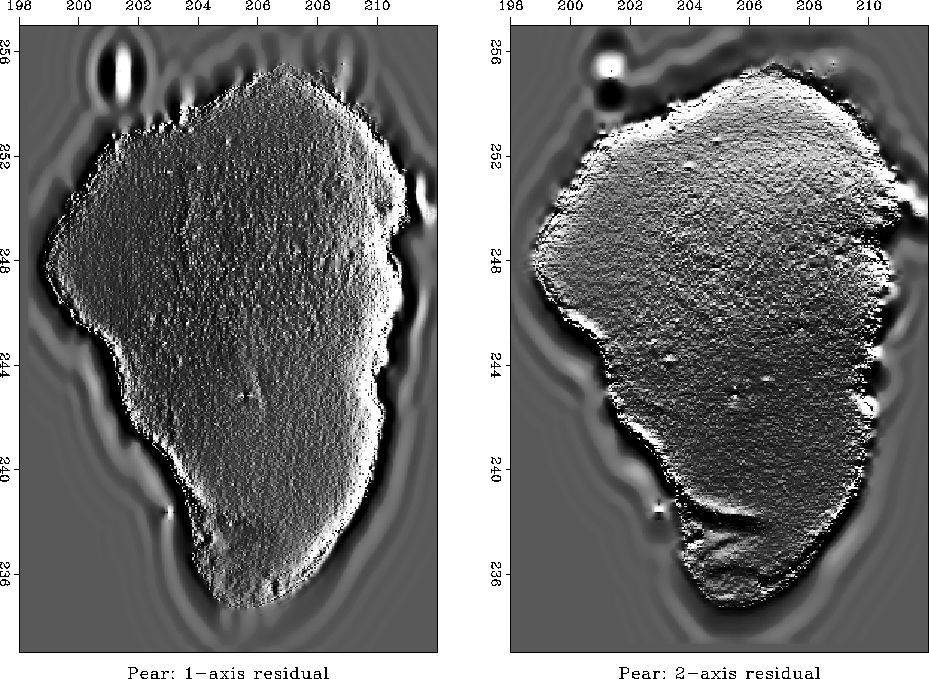
 |
(8) |
I omit the display of my subroutine for the goals (8) because the code is so similar to potato(). (Its name is pear() and it is in the library.)
A disadvantage of the previous result in Figure 7 is that for the horizontal gradient, the figure is dark on one side and light on the other, and likewise for the vertical gradient. Looking at the result in Figure 8 we see that this is no longer true. Thus although the topographic PEFs look similar to a gradient, the difference is substantial.
 |
Subjectively comparing Figures 7 and 8
our preference depends partly on what we are looking at
and partly on whether we view the maps on paper or a computer screen.
Having worked on this so long,
I am disappointed that most of my 1997 readers
are limited to the paper.
Another small irritation is that we have two images
for each process when we might prefer one.
We could have a single image if we go to a single model roughener.
Sergey Fomel tested ![]() and found it disappointing.
An alternative would be to use
the symmetrical roughener rufftri2()
and found it disappointing.
An alternative would be to use
the symmetrical roughener rufftri2() ![[*]](http://sepwww.stanford.edu/latex2html/cross_ref_motif.gif) .
.
I have wondered whether any significant improvements
might result from using linear interpolation ![]() instead of simple binning
instead of simple binning ![]() .The subroutine arguments are identical in subroutine
lint2()
.The subroutine arguments are identical in subroutine
lint2() ![[*]](http://sepwww.stanford.edu/latex2html/cross_ref_motif.gif) and subroutine bin2()
and subroutine bin2() ![[*]](http://sepwww.stanford.edu/latex2html/cross_ref_motif.gif) ,
so they are ``plug compatible''
and we could easily experiment.
,
so they are ``plug compatible''
and we could easily experiment.